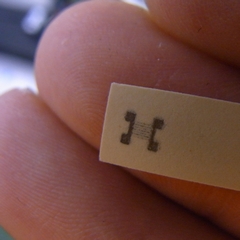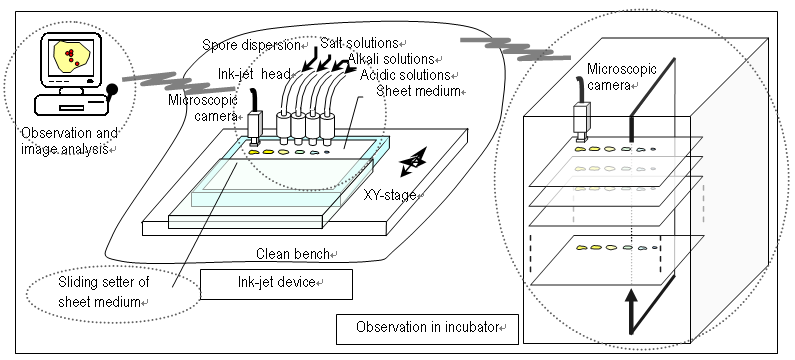![]() Super paper application laboratory
Super paper application laboratory

|
|
 |
| Would you like to explore "super paper-application" research in our laboratory? For prospective students pursuing effective utilization of bio-materials and new technology derived from paper science, "super paper-application" is a promising field into the future. Paper is a simple and familiar material, and thus greatly expected to be applied to electronics, biosensors, and micro-electromechanical system (MEMS). Technologies of papermaking processes, addition of chemicals, post-forming processes can alter paper properties and provide superior performances. In addition, we proposed a simple method-immersion in salt water- for flood-damaged important books and documents to inhibit mold growth. This first-aid is under development for conservation of also paper cultural properties. Let's do super paper science. |
|
|
Entrance examination for Graduate School (PhD and Msc candidates) Feel free to contact me for more details such as scholarship, apartment, etc. |
|
|
Research topic examples |
|
|
Establishment of ink-jet technology to develop high performance bioassay
system |
 ← System for ejecting spore dispersions by using an ink-jet printing device ← System for ejecting spore dispersions by using an ink-jet printing deviceRegular bioassay systems require many numbers of tests with a lot of time and labor because the selection of fungi and culture, sterilization process, culturing of spores, extraction, and determination of growth amount are performed separately and manually. Establishment of automatic systems organizing this series of operations into an all-in-one unit will exceed limitations in the number of levels of culturing conditions for germination and growth, thus eliminating a risk of misjudging optimum conditions. This system development is regarded as one section of bioengineering. Culture media can be a kind of paper-like sheet. The ink-jet device ejects some chemicals and nutritious liquids to make different environments on this paper. The ink-jet head of the device is the most important to eject live spores. After or rather during the culture, fungal growth is monitored and recorded by a microscopic digital camera. Such devices make processes of fungal screening and enzyme isolation efficient for bio-ethanol production from non-food cellulose polysaccharides, for example. |
|
|
Microstructure formation on paper by ink-jet printing technology -Paper electronics, paper-based sensors, paper MEMS etc.- |
 ←Thin silver electrode formed by ejecting silver nanoparticle inks and
3D profiles on gloss-type (left) and matte-type (right) ink-jet paper ←Thin silver electrode formed by ejecting silver nanoparticle inks and
3D profiles on gloss-type (left) and matte-type (right) ink-jet paperInk-jet technology has been developed mainly for uses of personal records, but currently applied to a wide variety of industries using functional inks. Printed electronics is a representative field by such applied technologies, but substrates for inks to settle on for those products have been commonly ceramics and plastics. "Paper" can be a substrate for it! Paper is cheap, portable, recyclable, disposable …, and produced stably and unlimitedly under the sustainable forestry. Enough electrical conductivity of silver nanoparticle inks on paper is essential and has been realized by controlling surface energy paper. Following steps to manufacture real devices will be advanced by your research. Speaking paper with a vibration unit, home-made electronics by personal ink-jet printer, direct-printed IC tag on paper-made containers and more can be produced up to your ideas. |
|
|
First-aid to save flood-damaged paper-made cultural heritage and documents from fungal growth by using salt water |
|
|
| Others |
| Anypaper-related topic is welcome. Consult with T. Enomae. |
Toshiharu Enomae, Associate Professor
Paper Science Laboratory
Department of Bioaterial Sciences
Graduate School of Agricultural and Life Sciences
The University of Tokyo
Contact T. Enomae for more details
Copyright (C) 2011 Toshiharu Enomae. All Rights Reserved.
Top page